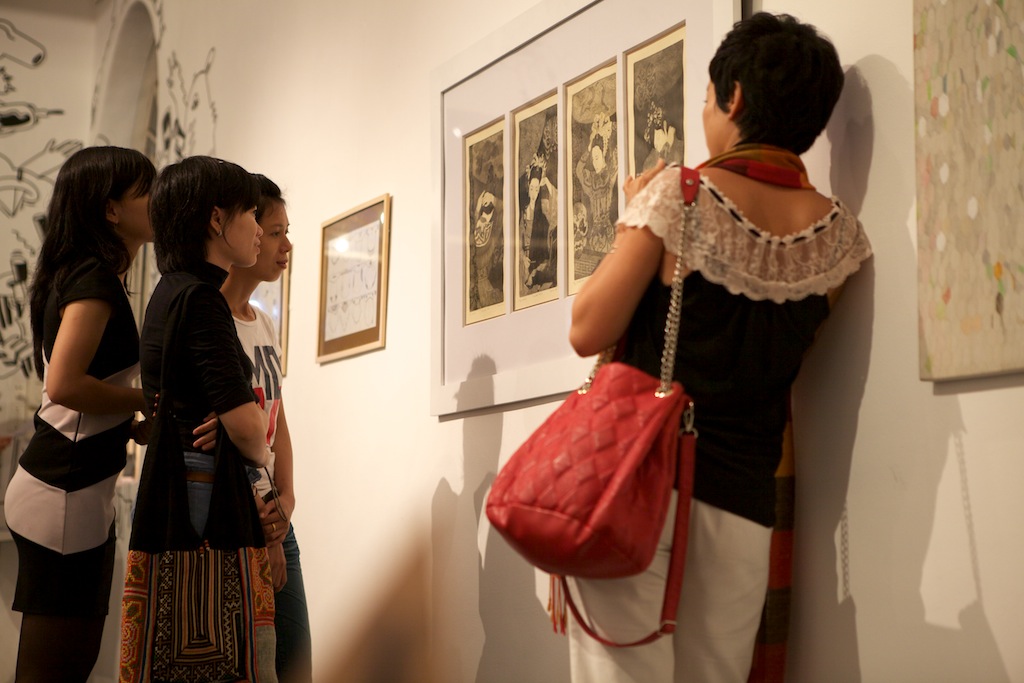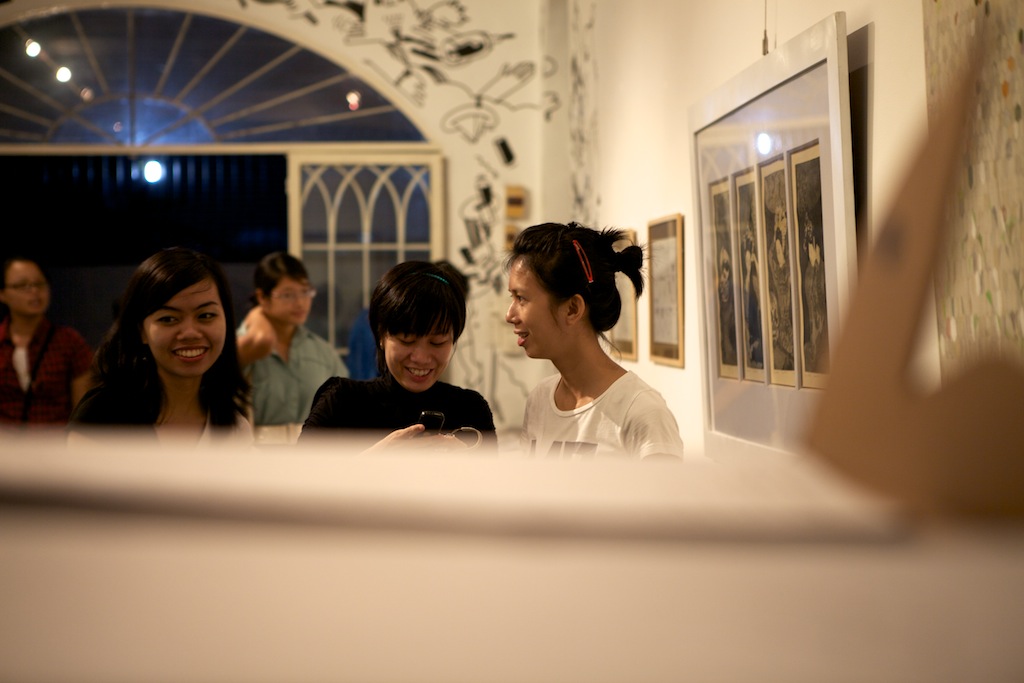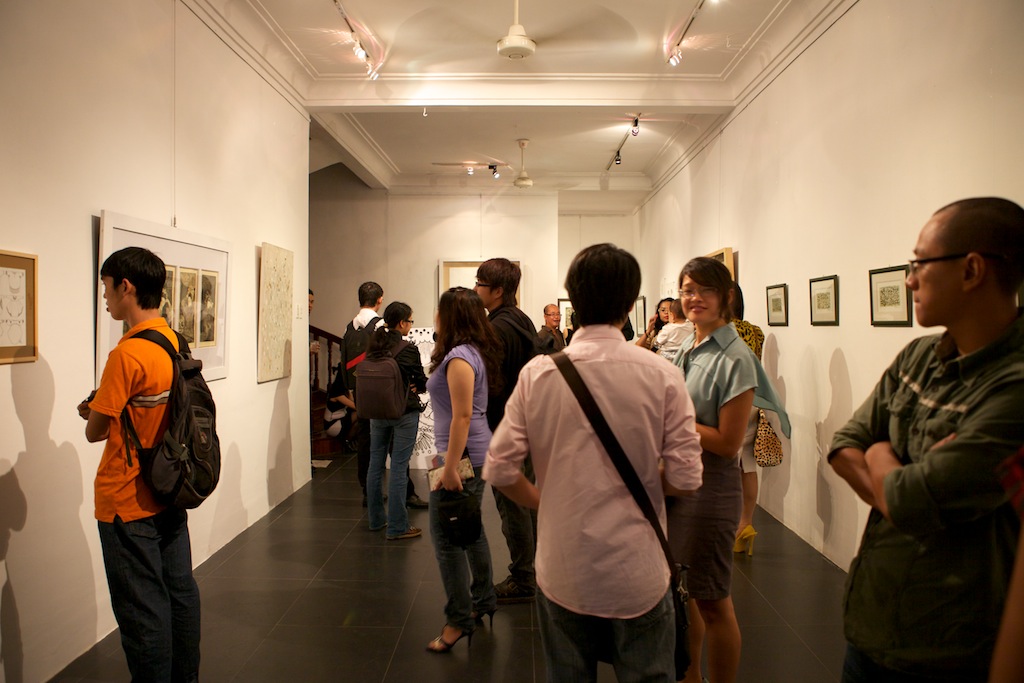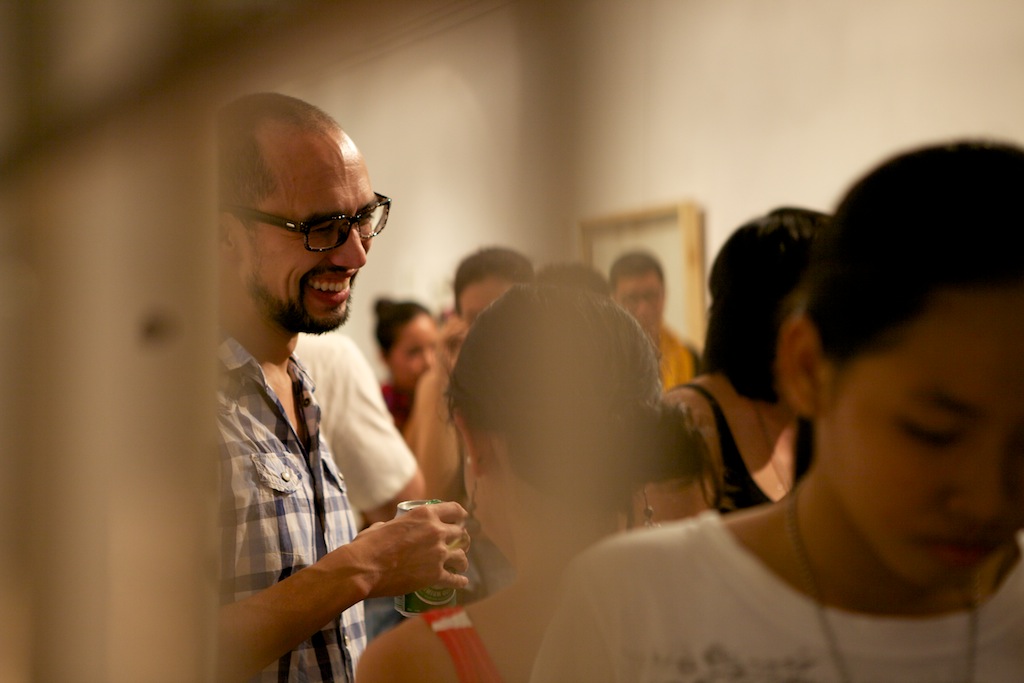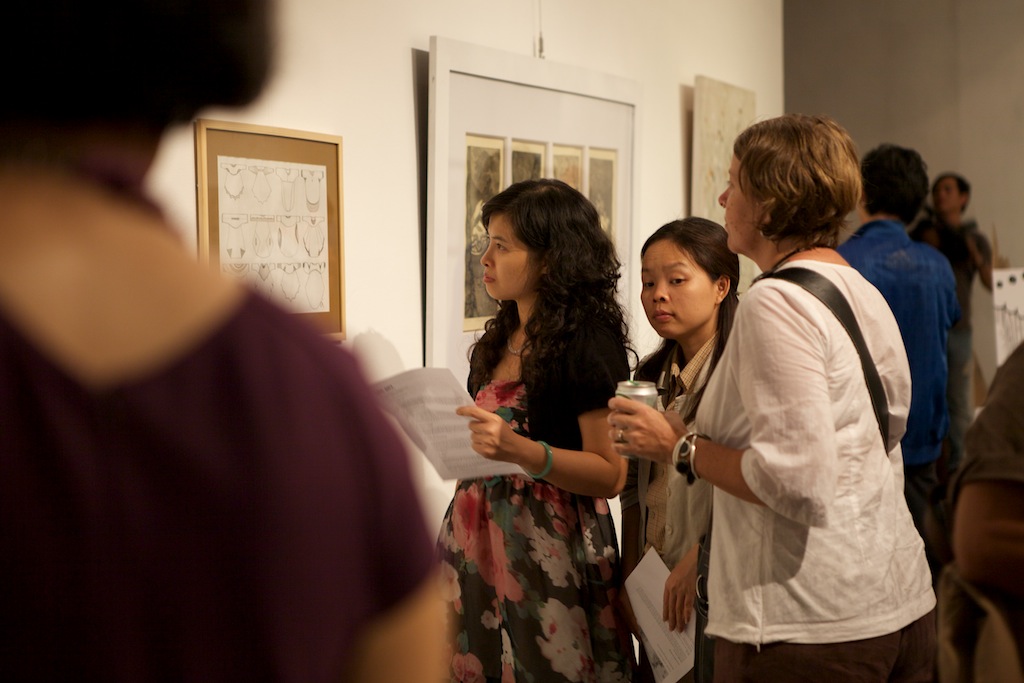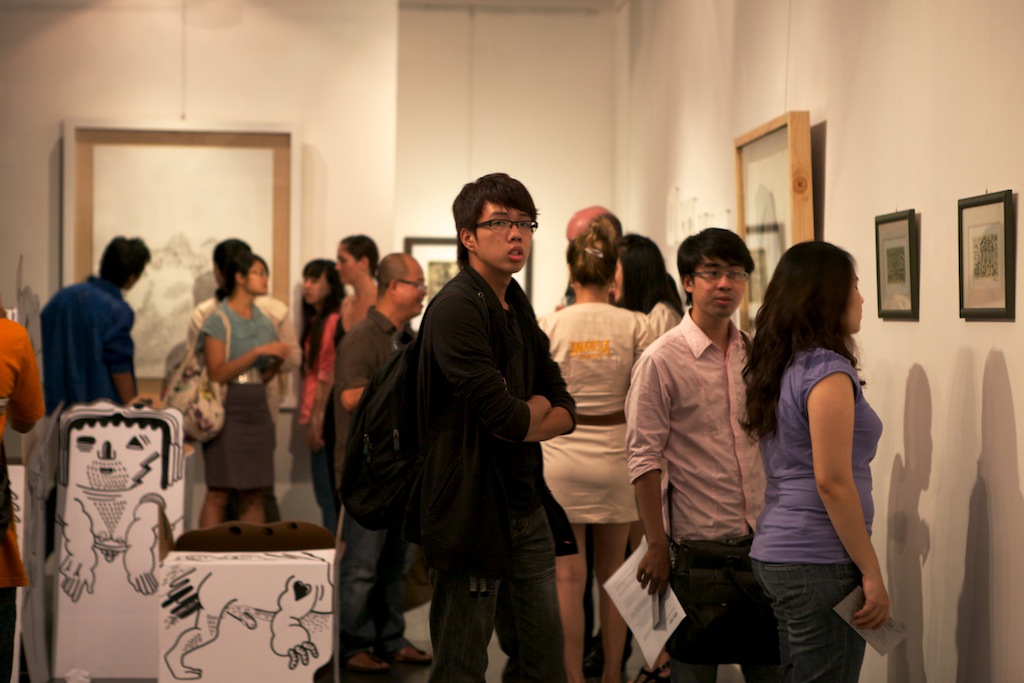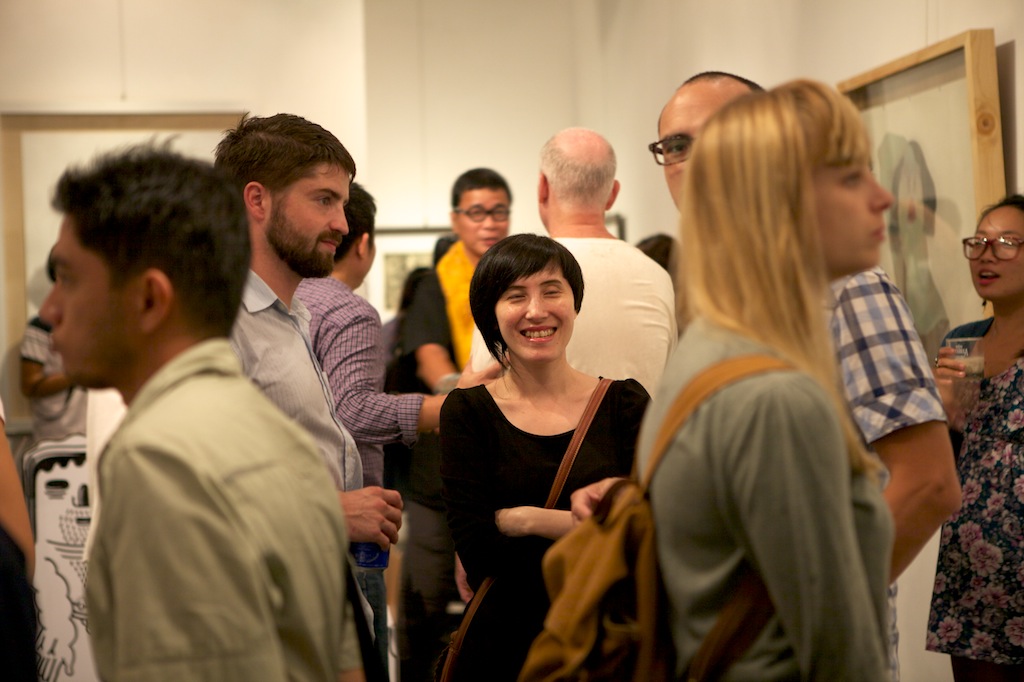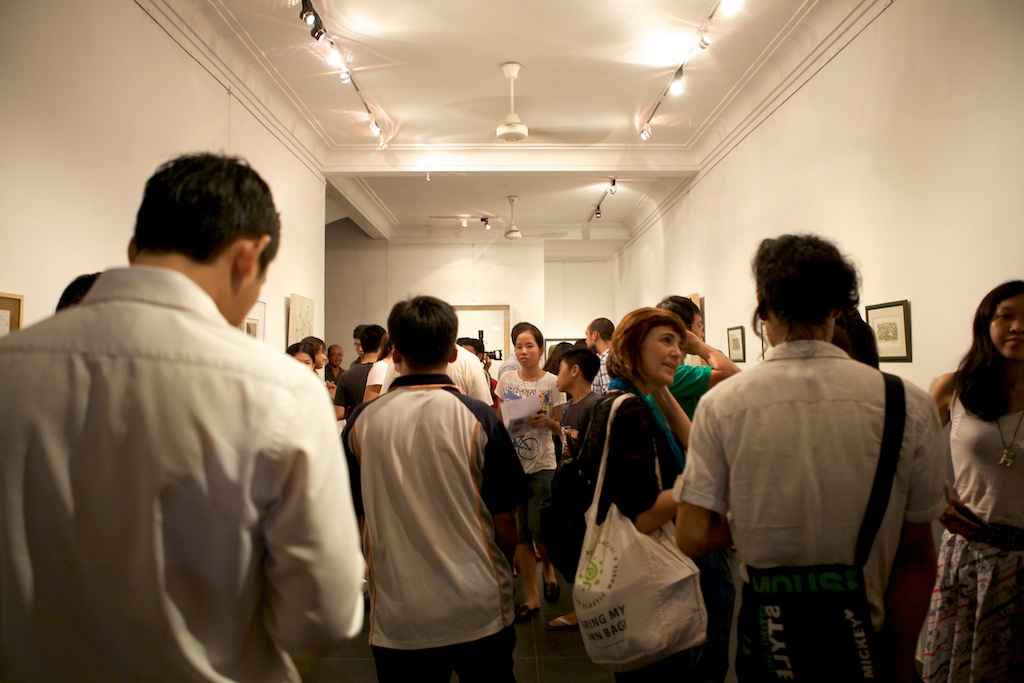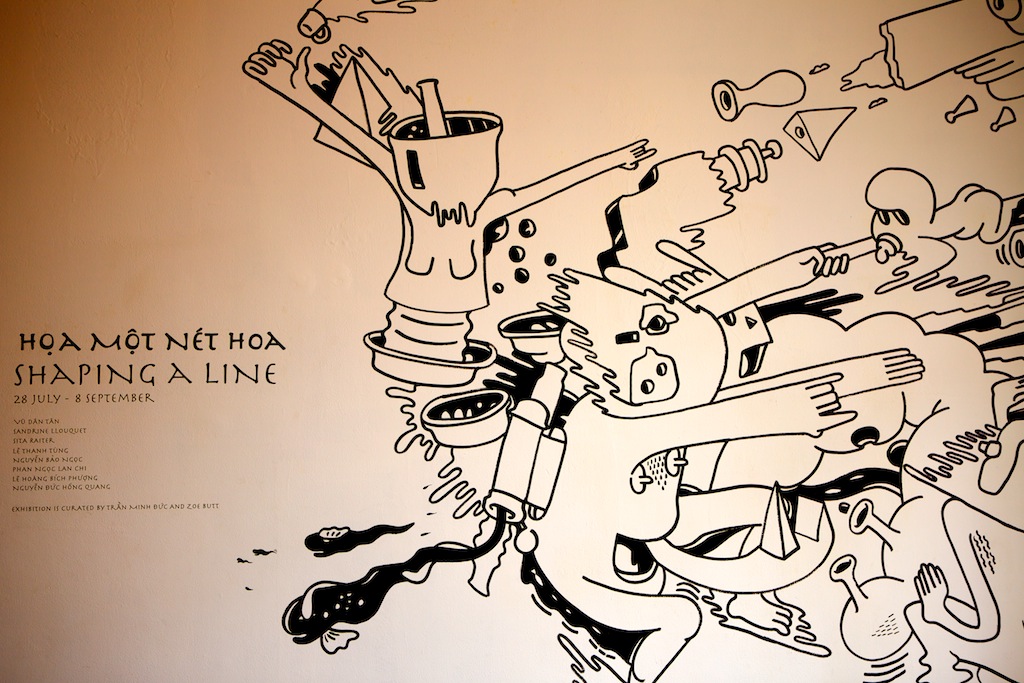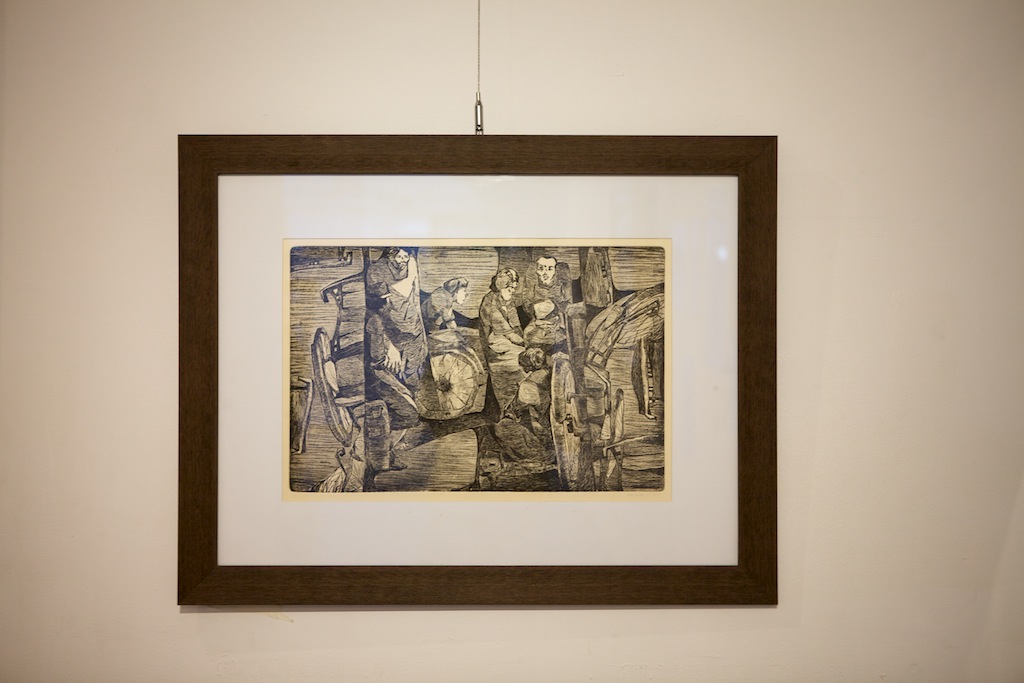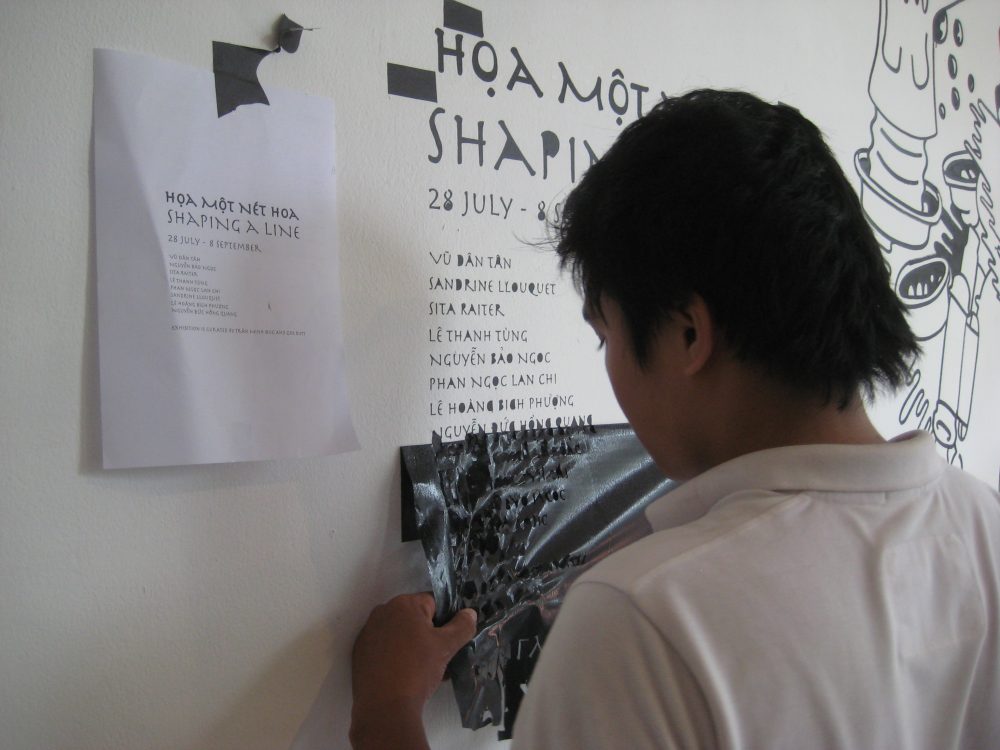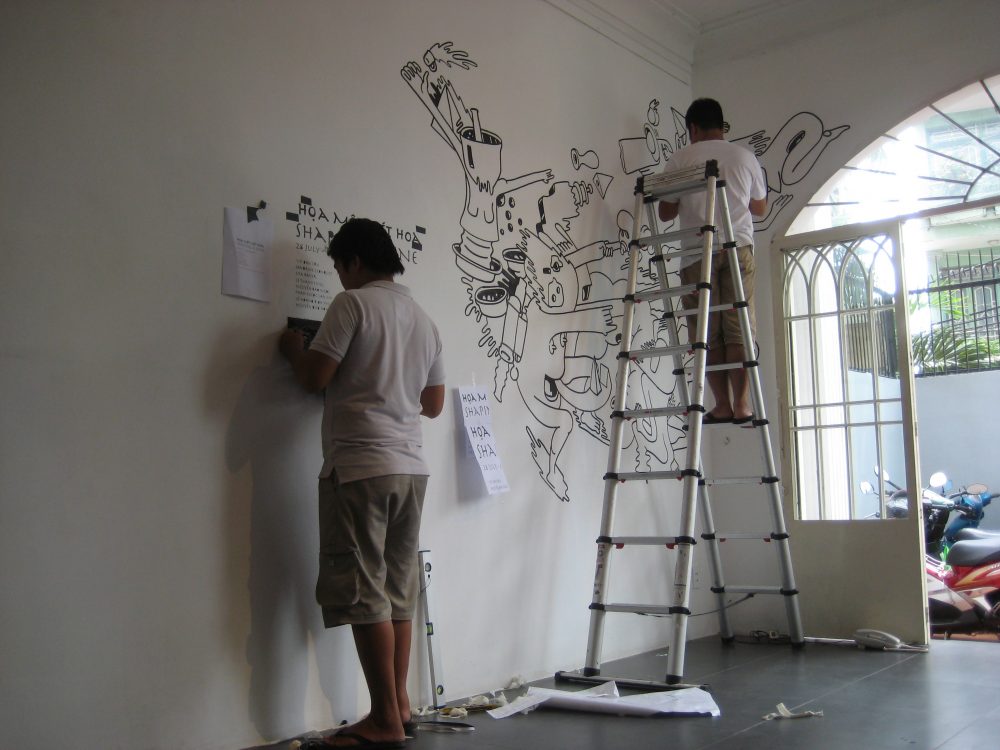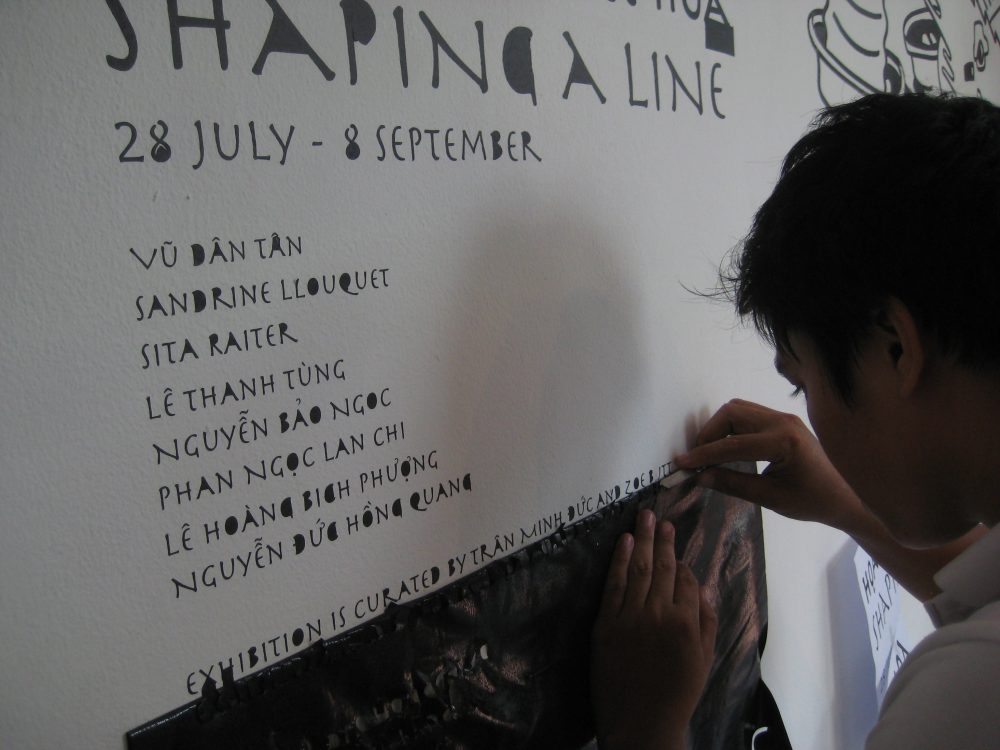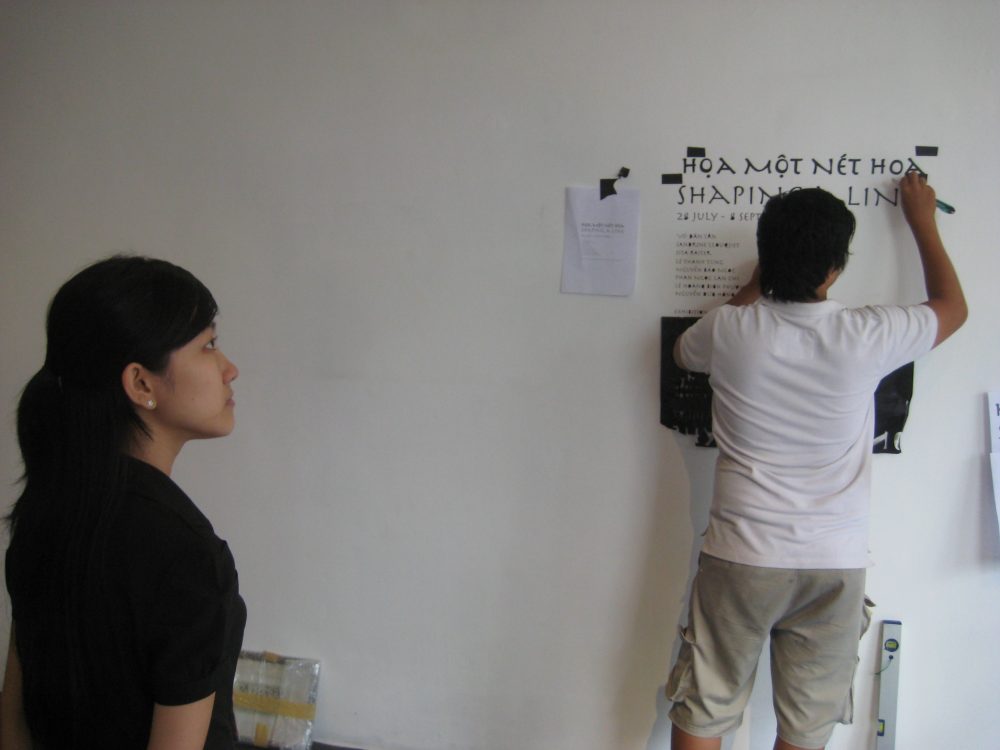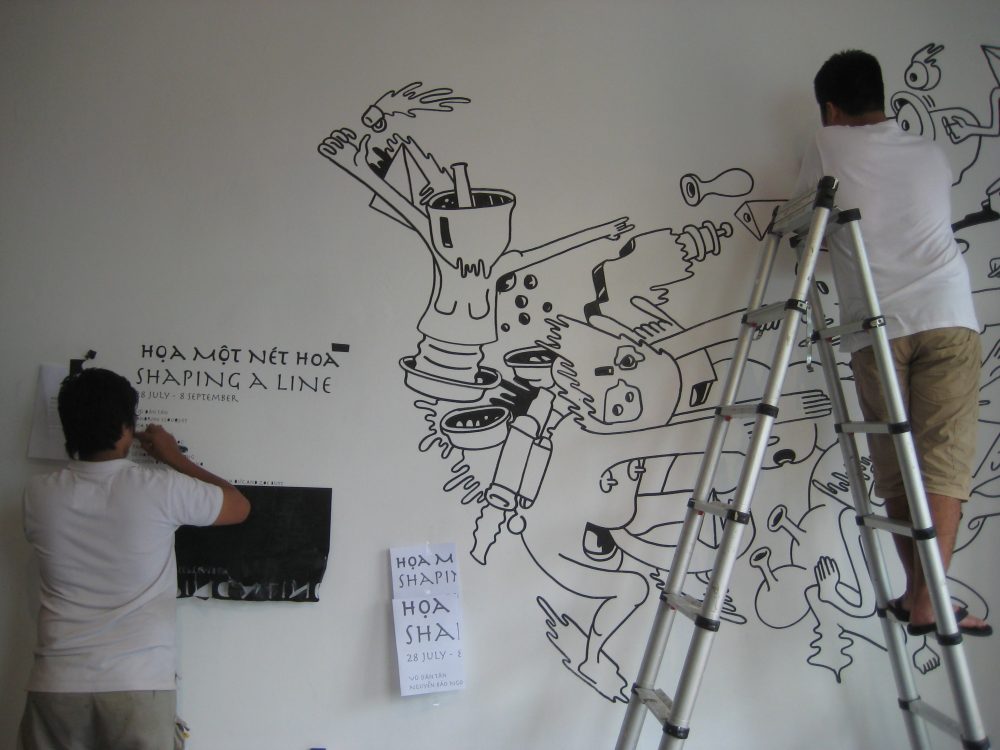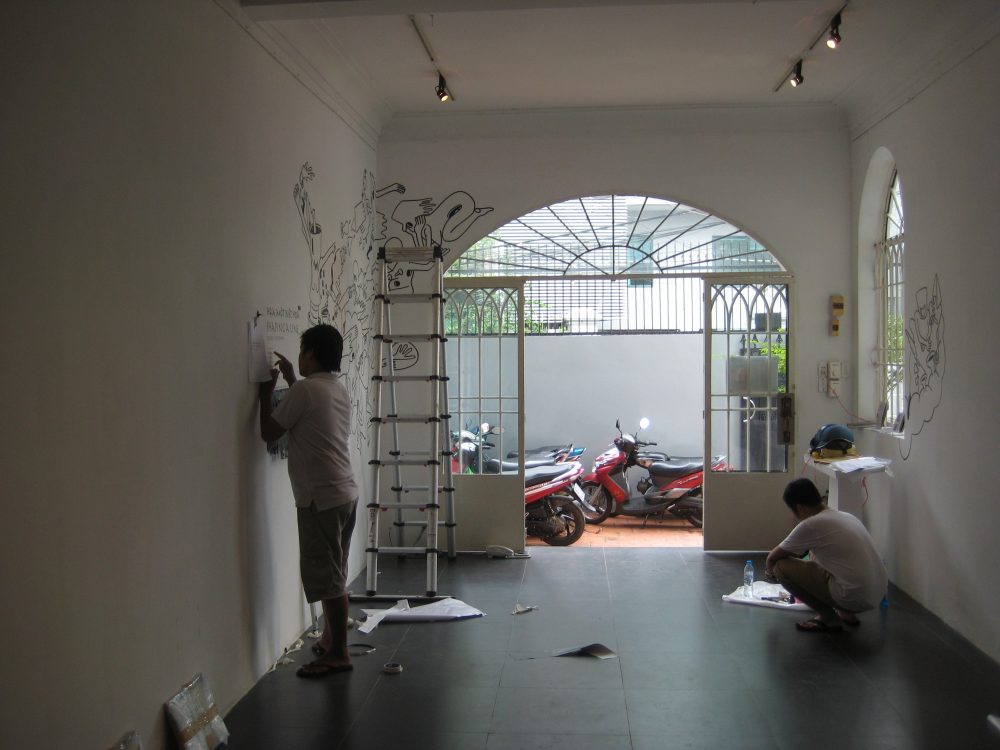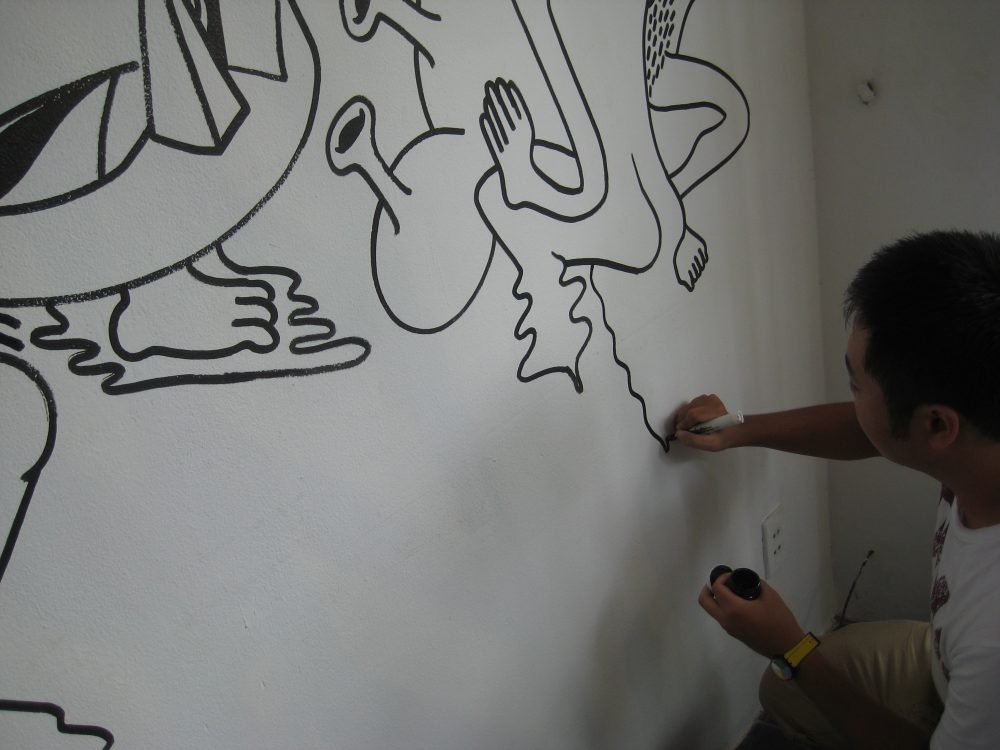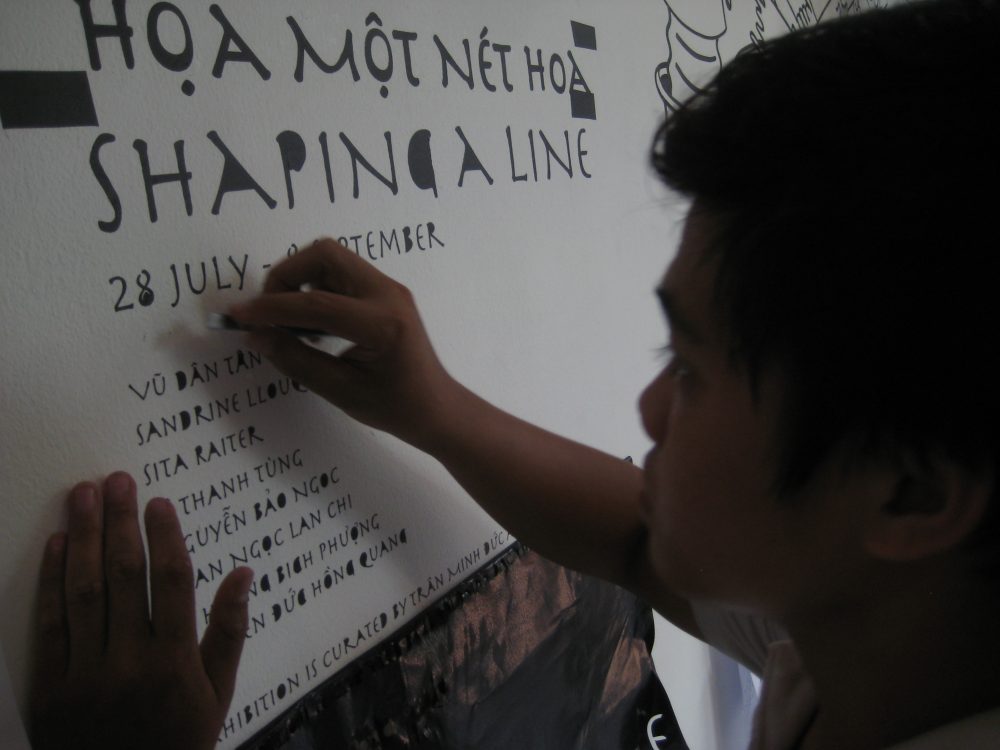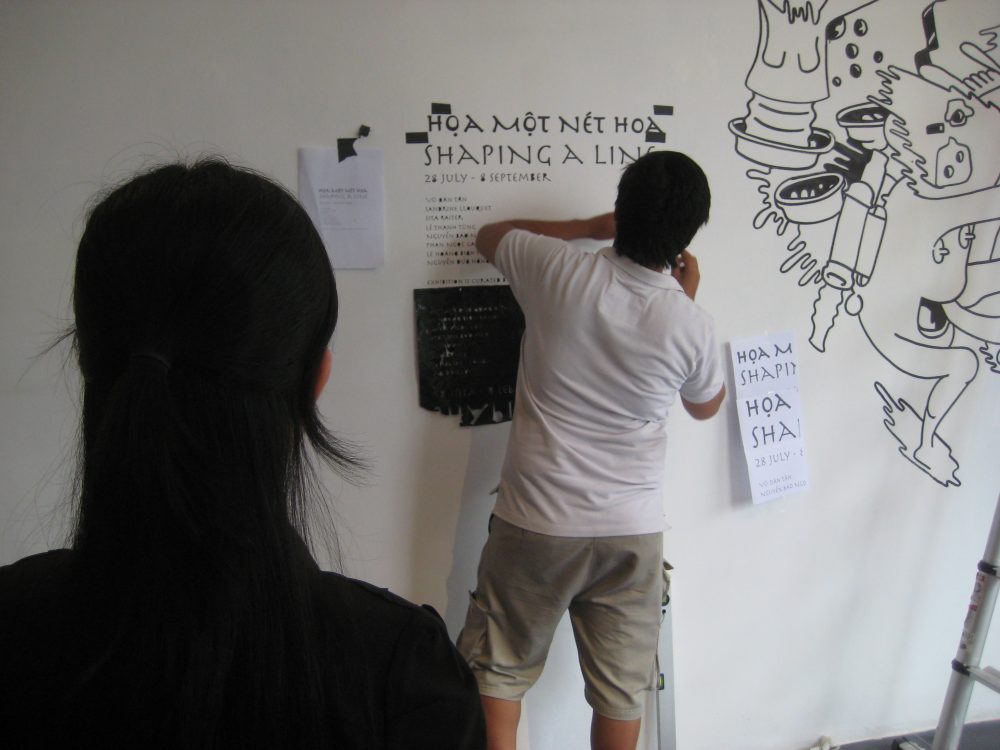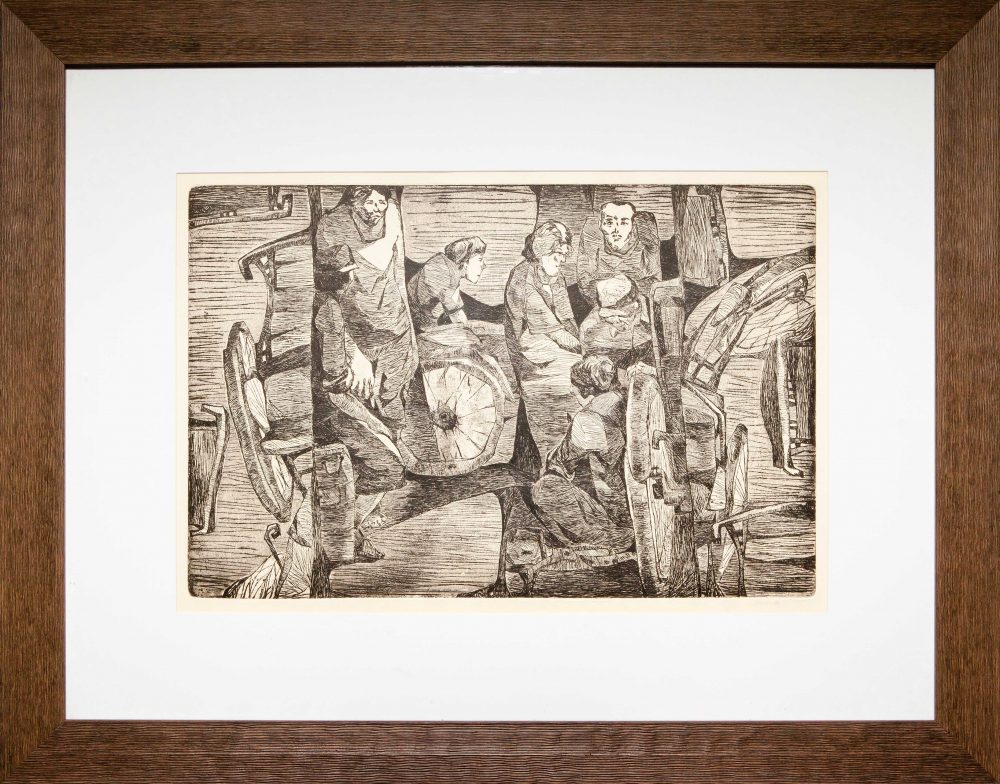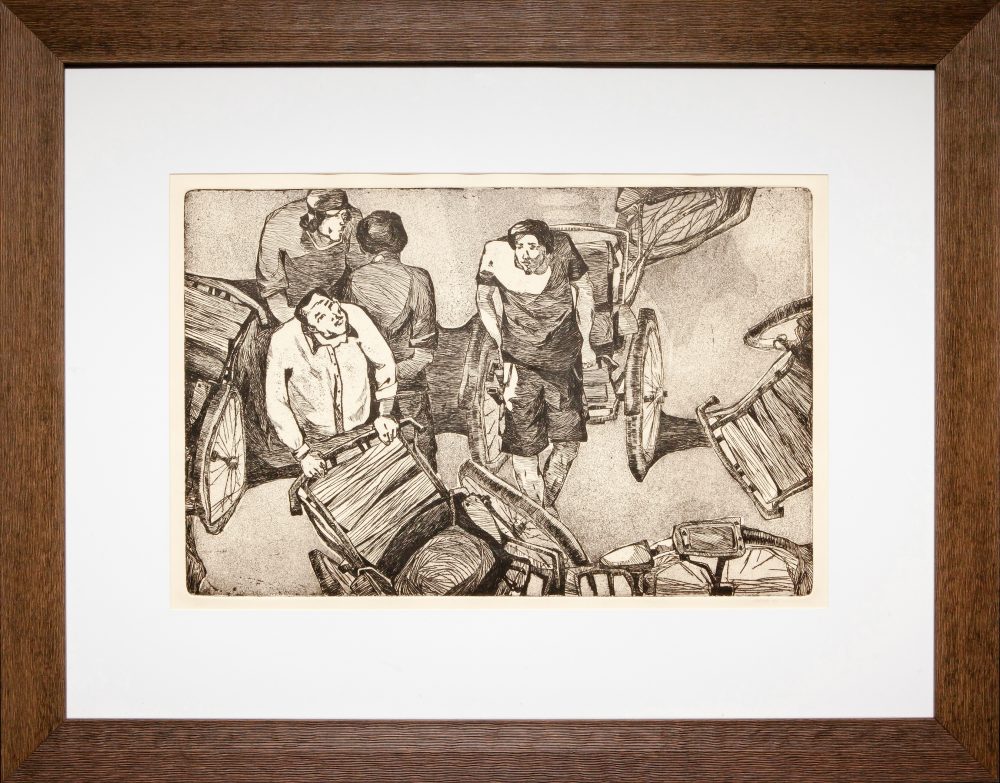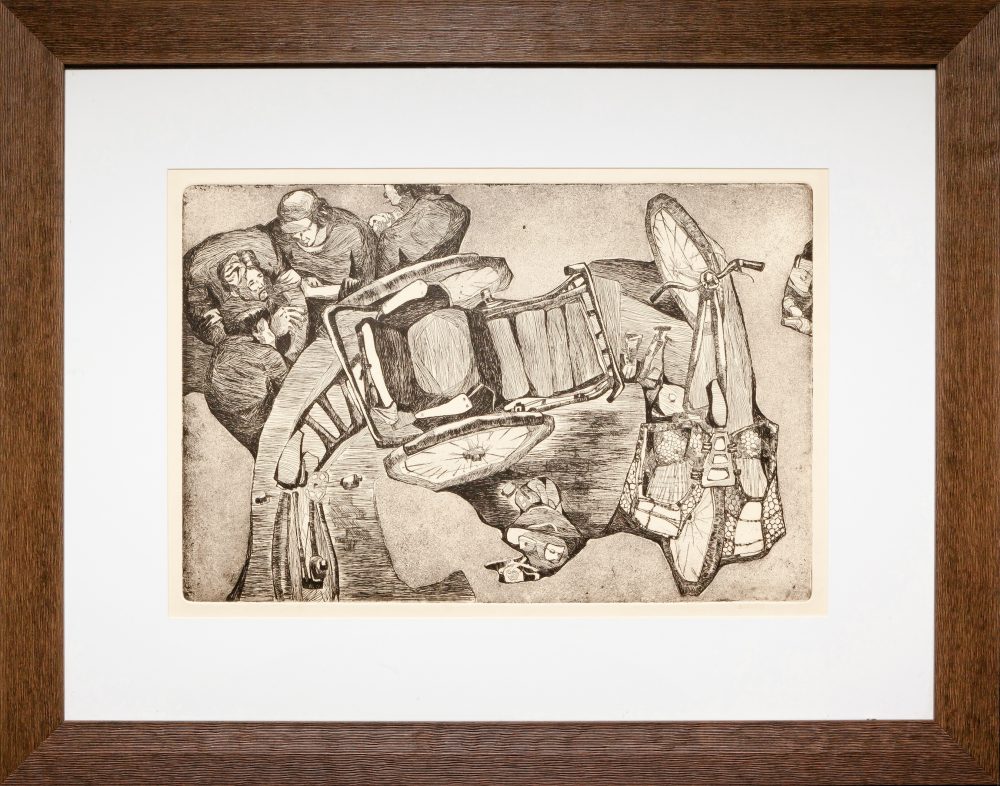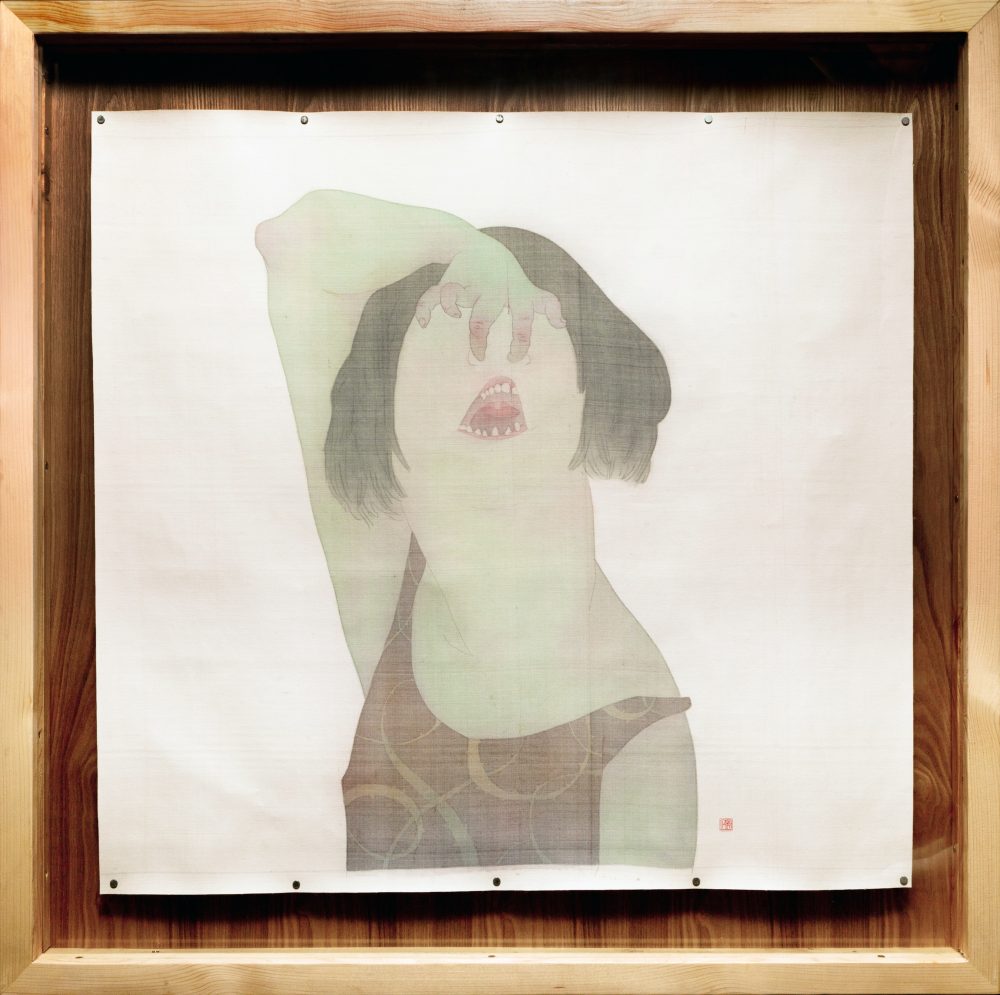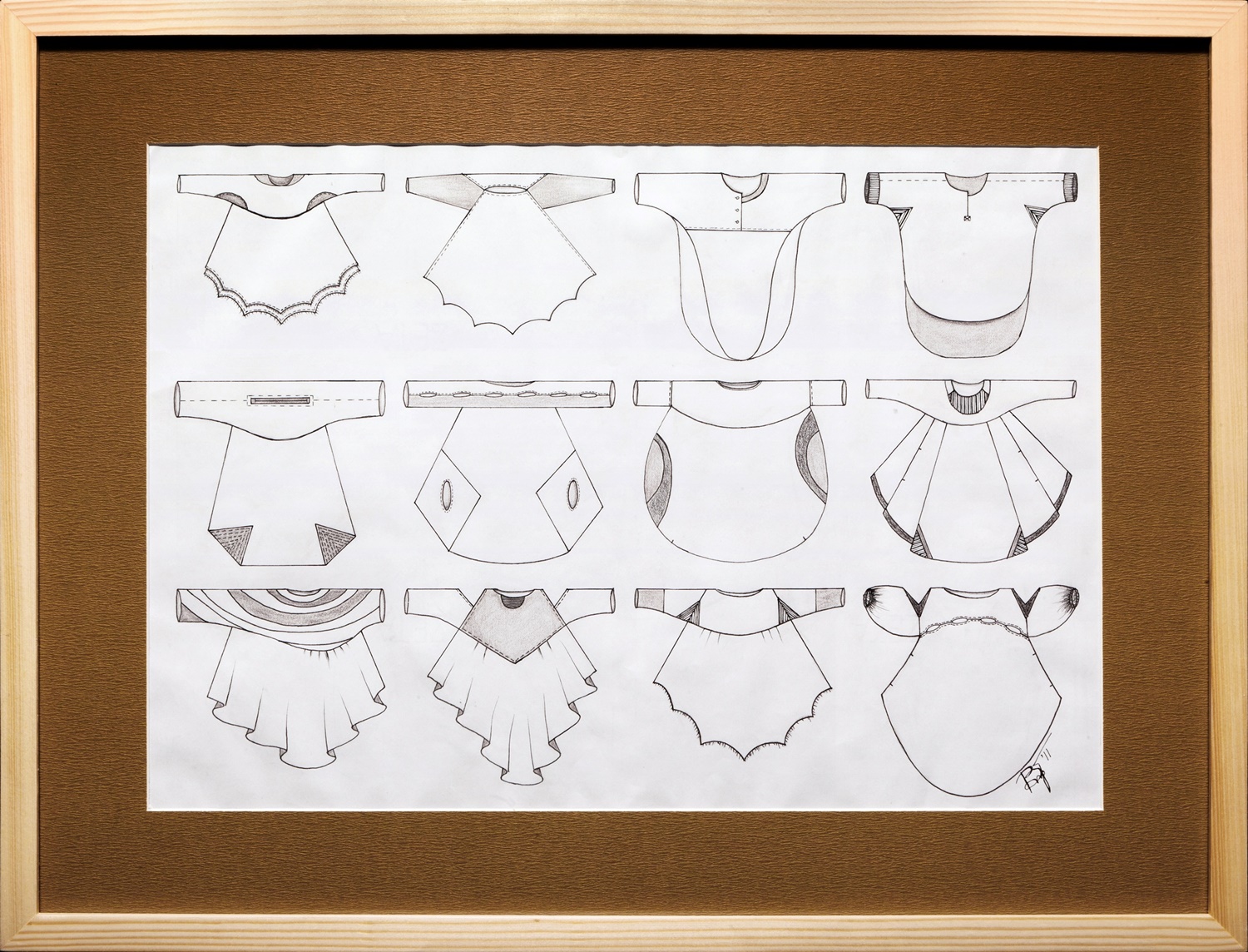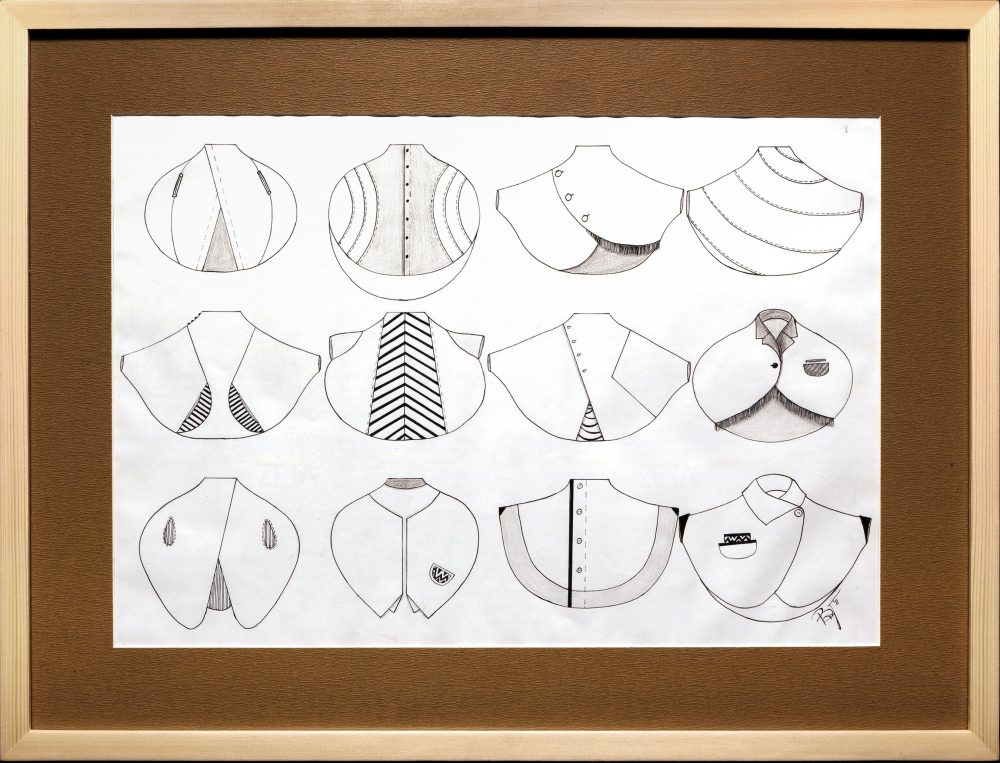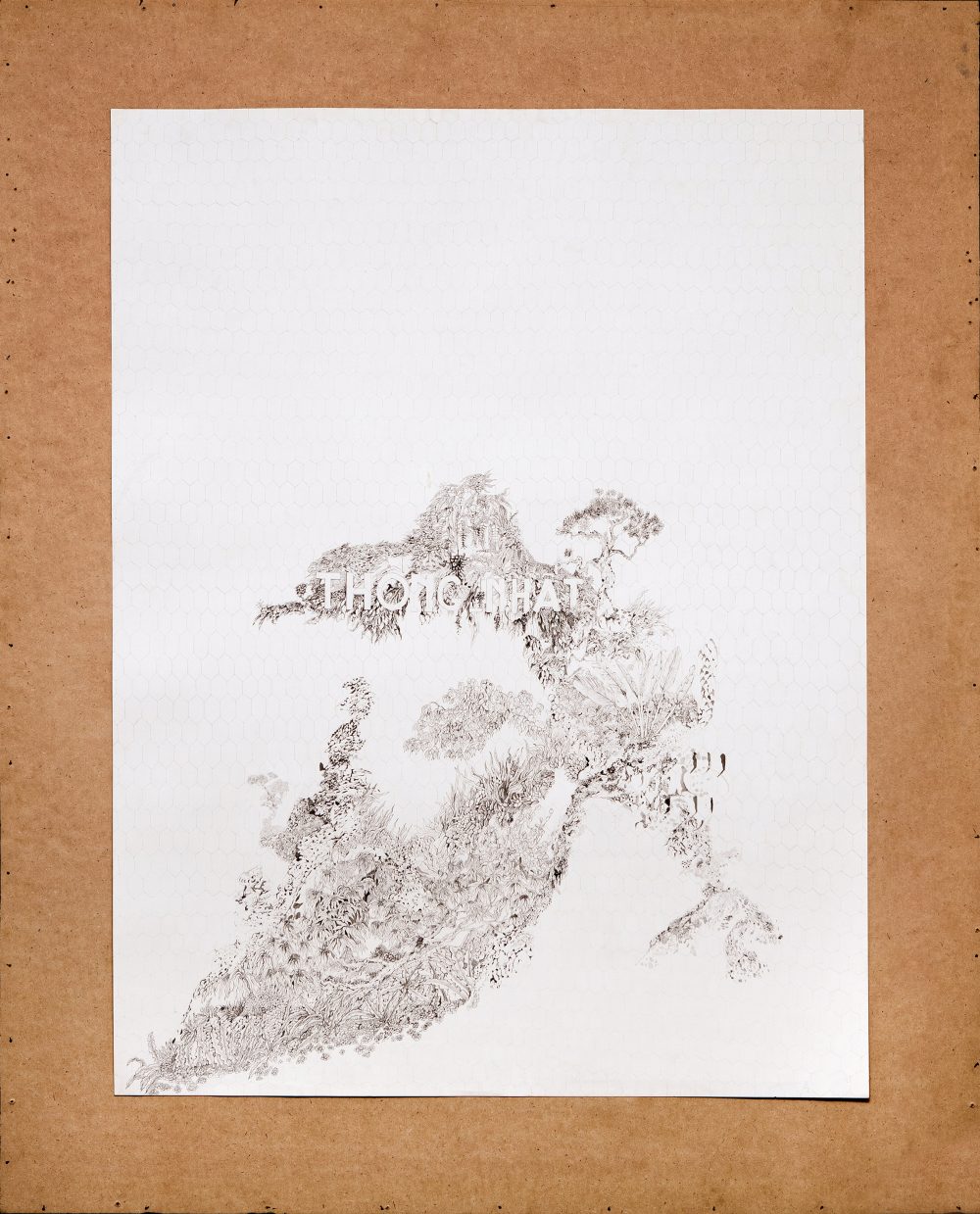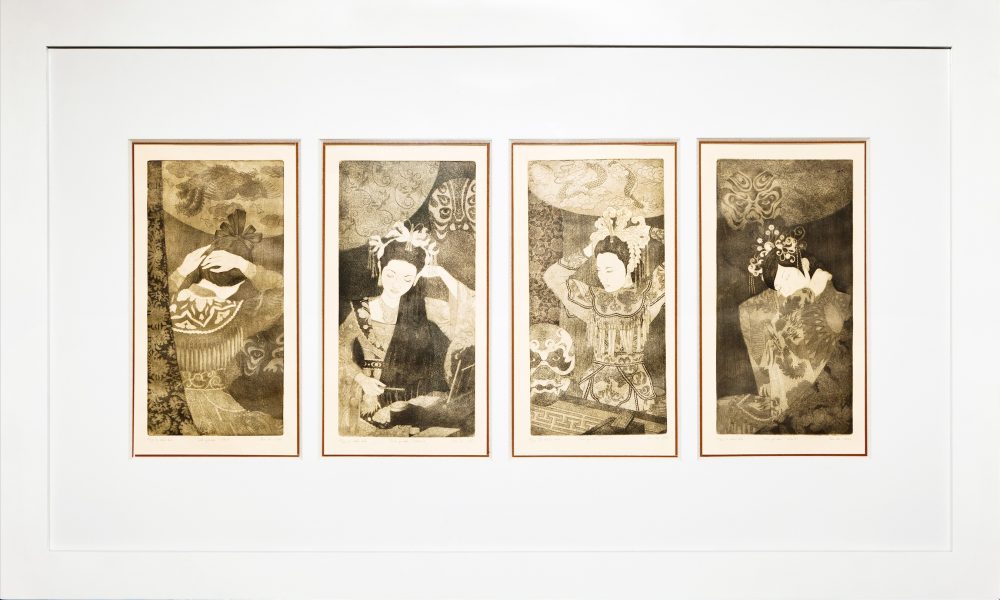Opening: 28.07.2011 @6pm
Exhibition on view until 08.09.2011
Location: Sàn Art
3 Me Linh Street
Binh Thanh District
Ho Chi Minh City
Drawing on paper using ink, watercolor, pencil, charcoal, and other mediums are not new to Vietnamese art, but local artists who pursue this form of expression as a dominant mode of their practice are few and far between. Internationally, the art of drawing is a celebrated medium with dedicated museum expertise responsible for writing about its history and relevance (such as the Drawing Centre in New York), however sadly in Vietnam, the skill of drawing is still considered inferior to the plastic arts. The brilliance of artists such as William Kentridge (South Africa), Qiu Anxiong (China), Eko Nugroho (Indonesia) and many more, whose drawings have taken on new forms that have been internationally toured around the globe, are not seen nor discussed in Vietnamese art education curricula. In Vietnam, drawing on paper has predominantly been considered a sketch to note draft ideas for a work in another medium, despite the fact that these drawings are often beautiful, with rigor in their own right.
In response to this context, ‘Shaping a Line’ will showcase the work of eight local artists whose training in various backgrounds, such as architecture, illustration, animation and fashion, has informed their art with particular intriguing influences in terms of subject and treatment of the drawing medium.
For Nguyễn Thị Bảo Ngọc, fashion design is a passion that has become an instinct. According to Ngọc, creating forms is endless, but being able to combine wild imagination with the practicality of clothing for wear is not easy. Looking at her sketches we can see the physical mechanism of fashion design, where the pencil line articulates a sculpture, or perhaps resembles old machines from ancient times.
Sita Raiter holds a degree in Architecture and East Asian Studies and her drawings reference the rapid urban changes she has witnessed in Ho Chi Minh City. Emulating nature has long been an indispensable part of international architectural design and in ‘Thong Nhat’ Sita has covered the paper surface with flower motifs, strange forms found in nature, insects’ eyes and beehive-like structures, as if right from the beginning they have been the inspiration and the basis of forming and expanding the structure of cities today.
Phan Ngọc Lan Chi recently graduated from the printmaking department of the Applied Arts University in Ho Chi Minh City. In ‘Tuồng’, she has embarked on a route where few other young Vietnamese find interest. Through the meticulous art of etching, she casts light on Vietnamese traditional theatre, called Tuồng. In her black and white shadowed portraits of these singers the world of contemporary women is insinuated, as if the veils of the past are being lifted to disclose a corner of their inner mind and life.
Another graduate from the Applied Arts Univeristy, HCMC, Nguyễn Đức Hồng Quang has chosen to portray the life of cyclo drivers in Ho Chi Minh City. In his etchings it is as if we are looking from above, while also from ground level as his figures morph into a kind of abstraction not dissimilar to a narrative of a surreal strip of cinema.
Lê Thanh Tùng has worked as an illustrator and animator whose impressive large-scale black and white drawings often artistically transform the interior surfaces of existing architecture. Drawing directly onto walls and turning cardboard into a three dimensional world, his drawings reflect the youth of today and their desire to break free of the stereotypical roles in society.
In the work of Lê Hoàng Bích Phượng, the intricate beauty of Vietnamese silk painting reveals a contorted world where the fragility of a growing mind is thrown into a kind of chaos.The people in her paintings often have strange features, seemingly from another universe, both in terms of external appearance and internal psychology. We can see transparent layers, hazy and dreamy as if from the memories of childhood, then sharp, powerful lines, somewhat disturbing like those in Japanese animation. Looking through those lines and colors on silk, the viewer can see the minds of adolescents and the shifts in coming of age.
In Sandrine Llouquet’s work we can see a game of hide and seek forming shape alluding to ideas of camouflage, invisibility and transparency as topics that are often evidenced in her artistic practice that is well known to local audiences. Her signature treatment of the figure, the clothing of her characters, with their masks and different disguises resembling dolls, recall the language of cartoon that contains a kind of eerie cruelty. Using these forms she tells narratives from all walks of everyday life.
Last but not least, San Art is pleased to present the lithographs of the late Vũ Dân Tân, one of Vietnam’s most respected artists from a generation that paved the way for contemporary experimental ideas of art making in Vietnam. Vũ Dân Tân’s liberal expression, borderless imagination and humorous charisma is well known across South East Asia and the lithographic bank notes included in this exhibition demonstrate the worldliness of an artist whose life journey included an avid interest in music, performance and the social relevance of art production.


